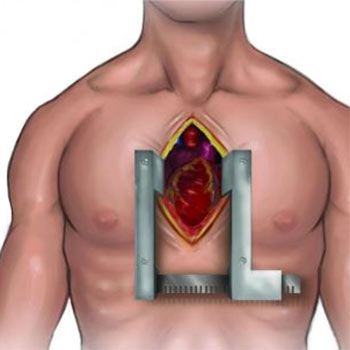What is Open Heart Surgery?
Open heart surgery is a medical procedure in which the chest is cut open, and surgery is performed on the muscles, valves, or arteries of the heart. It is a significant surgical intervention used to treat various heart conditions and diseases. This procedure is essential for addressing life-threatening heart issues that cannot be treated through less invasive methods. In this article, we will explore what open heart surgery involves, the conditions it treats, the procedure, recovery, and potential risks.
What is the process for understanding Open Heart Surgery?
Open heart surgery is named for the process of opening the chest cavity to access the heart. The procedure typically involves the use of a heart-lung bypass machine, which takes over the function of the heart and lungs during surgery. This allows surgeons to operate on a still heart. Open heart surgery can be performed on adults and children, with the types of surgery varying based on the patient's condition and needs.

What conditions are treated by open heart surgery?
Open heart surgery is used to treat a variety of heart conditions, including
Coronary Artery Disease (CAD)
CAD is caused by the buildup of plaque in the coronary arteries, leading to reduced blood flow to the heart. Open heart surgery, specifically coronary artery bypass grafting (CABG), can improve blood flow by creating a new pathway for blood to reach the heart.
Heart Valve Diseases
Conditions like stenosis (narrowing of the heart valves) or regurgitation (leaky valves) may require valve repair or replacement through open heart surgery.
Congenital Heart Defects
Some individuals are born with structural heart defects that can be corrected through open heart surgery. These defects can include holes in the heart, abnormal blood vessels, or improperly formed parts of the heart.
Aneurysms
An aneurysm is a bulging or weakening of an artery wall. Open heart surgery can repair or replace the affected section of the artery to prevent rupture.
Heart Transplants
In severe cases of heart failure, where the heart can no longer function effectively, a heart transplant may be necessary. This involves removing the diseased heart and replacing it with a healthy donor heart through open heart surgery.
What is the Open Heart Surgery Procedure?
The steps involved in an open heart surgery are as follows
Preparation
Prior to surgery, patients undergo various tests, including blood tests, electrocardiograms (ECGs), and imaging studies, to evaluate their heart condition. Anesthesia is administered to ensure the patient is unconscious and pain-free during the procedure.
Incision
The surgeon makes a large incision in the chest, typically along the breastbone, to access the heart. The breastbone is then separated to expose the heart.
Heart-Lung Bypass
The heart-lung bypass machine is connected to the patient's blood vessels. This machine takes over the function of the heart and lungs, allowing the heart to be stopped temporarily for surgery.
Performing the Surgery
Depending on the condition being treated, the surgeon may perform various procedures, such as bypassing blocked arteries, repairing or replacing heart valves, or correcting congenital defects.
Closing the Incision
Once the surgery is complete, the heart is restarted, and the heart-lung bypass machine is gradually disconnected. The breastbone is wired back together, and the incision is closed with sutures or staples.
What is the recovery process like after open heart surgery?
Recovery from open heart surgery is a gradual process that can take several weeks to months. Here are key aspects of the recovery period:
Hospital Stay
Patients typically spend about a week in the hospital, with the first few days in the intensive care unit (ICU) for close monitoring.
Pain Management
Pain and discomfort around the incision site are common. Pain medications are provided to manage this discomfort.
Physical Activity
Gradual physical activity is encouraged to promote healing and prevent complications such as blood clots. Cardiac rehabilitation programs are often recommended to help patients regain their strength and improve their cardiovascular health
Lifestyle Changes
Adopting a heart-healthy lifestyle is crucial for long-term recovery. This includes a balanced diet, regular exercise, quitting smoking, and managing stress.
Follow-Up Care
Regular follow-up appointments with the cardiologist are essential to monitor the patient’s recovery and manage any potential complications
Open heart surgery is a complex but life-saving procedure used to treat various serious heart conditions. Advances in surgical techniques and postoperative care have significantly improved the outcomes for patients undergoing this surgery. While it carries certain risks, the benefits often outweigh these, providing patients with an improved quality of life and increased longevity. If you or a loved one is facing the prospect of open heart surgery, it is essential to discuss all concerns and options with your healthcare provider to ensure the best possible outcome.
